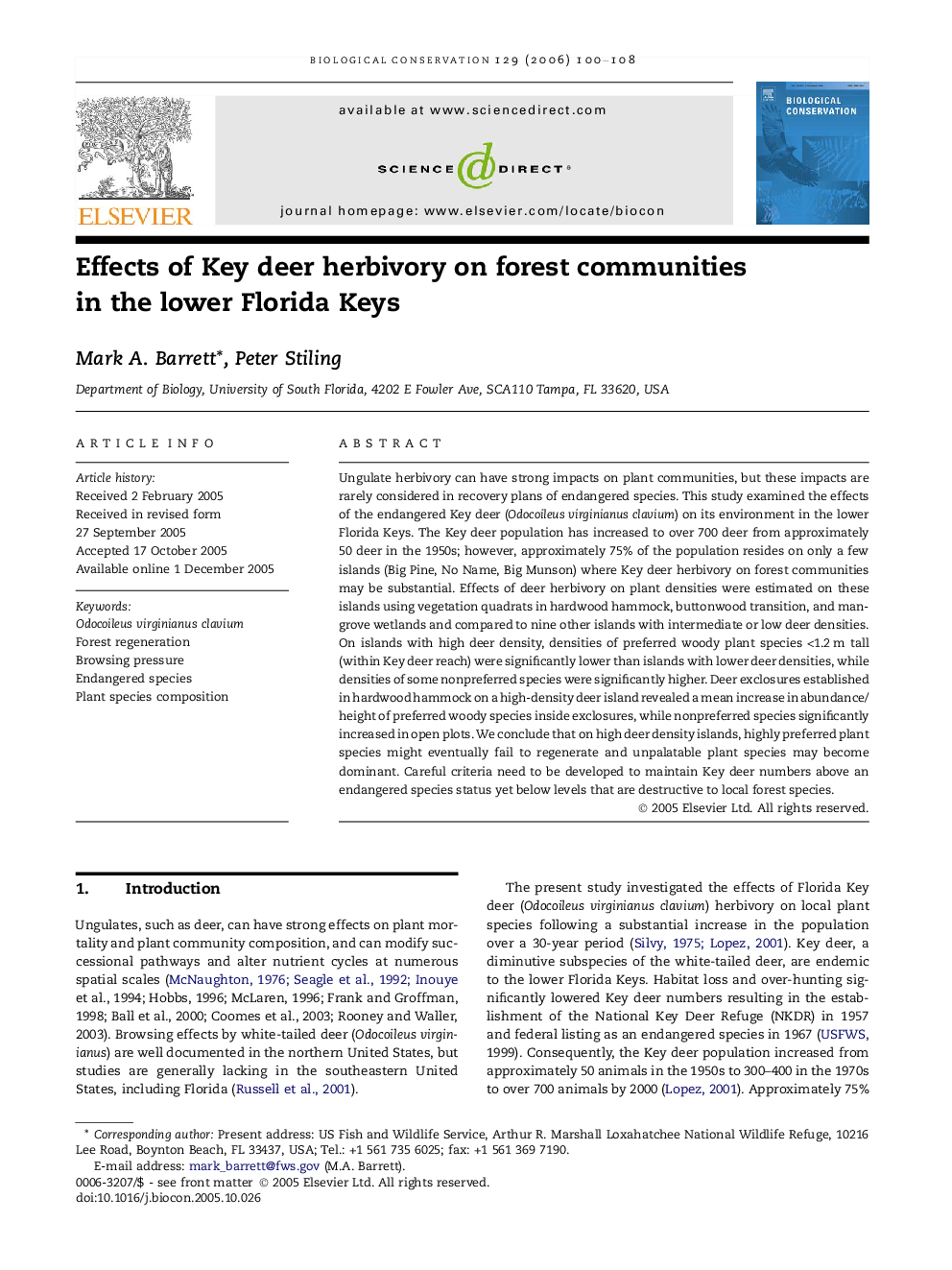| Article ID | Journal | Published Year | Pages | File Type |
|---|---|---|---|---|
| 4387798 | Biological Conservation | 2006 | 9 Pages |
Ungulate herbivory can have strong impacts on plant communities, but these impacts are rarely considered in recovery plans of endangered species. This study examined the effects of the endangered Key deer (Odocoileus virginianus clavium) on its environment in the lower Florida Keys. The Key deer population has increased to over 700 deer from approximately 50 deer in the 1950s; however, approximately 75% of the population resides on only a few islands (Big Pine, No Name, Big Munson) where Key deer herbivory on forest communities may be substantial. Effects of deer herbivory on plant densities were estimated on these islands using vegetation quadrats in hardwood hammock, buttonwood transition, and mangrove wetlands and compared to nine other islands with intermediate or low deer densities. On islands with high deer density, densities of preferred woody plant species <1.2 m tall (within Key deer reach) were significantly lower than islands with lower deer densities, while densities of some nonpreferred species were significantly higher. Deer exclosures established in hardwood hammock on a high-density deer island revealed a mean increase in abundance/height of preferred woody species inside exclosures, while nonpreferred species significantly increased in open plots. We conclude that on high deer density islands, highly preferred plant species might eventually fail to regenerate and unpalatable plant species may become dominant. Careful criteria need to be developed to maintain Key deer numbers above an endangered species status yet below levels that are destructive to local forest species.
